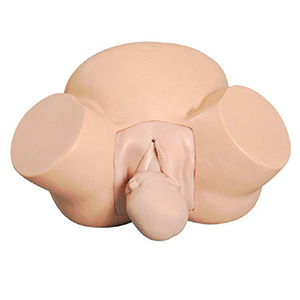Homepageпјҡ NEWS >> Midwifery training model: Can it effectively shorten the transition period from theory to practice?
In medical education, there is often a time difference between the learning of theoretical knowledge and the mastering of practical skills. Especially in the field of midwifery, students' ability to transition from classroom learning to facing real-world clinical scenarios can be challenged in many ways. Therefore, whether the training model can effectively shorten this transition period has become a key issue to improve the quality and efficiency of midwifery training.

Clinical significance
The process of midwifery is complex and uncertain, involving operational skills, judgment, and clinical responses that need to be strengthened in real situations. Traditional midwifery education relies heavily on simulated situations and clinical practice, but students can make mistakes due to nervousness or lack of practical experience when dealing with real mothers. At this time, the role of midwifery training model is particularly critical. Through the high simulation training model, students are able to practice repeatedly in non-clinical Settings to simulate different childbirth situations and emergency situations, so that they can adapt more quickly in practice and improve their practical skills.
Industry expert views
Many midwifery experts and clinical trainers believe that the connection between theoretical learning and practical practice is the most difficult part of medical education. Especially for beginners, in the face of complex childbirth scenes often feel not confident, and may even be nervous and unable to make the right decision. Industry experts generally believe that midwifery training models can effectively fill this gap, by simulating multiple birth situations and emergency scenarios, students can acquire the necessary skills before the actual operation, improve confidence, and reduce errors in clinical practice.
Professional Analysis
The midwifery training model provides a relatively safe and controllable training platform for the trainees by simulating many complicated situations such as delivery, abnormal fetal position, dystocia and rescue measures. This training can not only help students understand the gap between theoretical knowledge and practical operation, but also allow students to accumulate experience in "actual combat" and improve response speed. In addition, this simulation exercise can also allow students to improve the accuracy of operating skills through repeated operations and reduce mistakes in actual operation. Midwifery training model plays an important role in improving students' coping ability in clinical practice.
Data support
According to several medical education studies, repeated training using midwifery training models has shown greater confidence and operational accuracy in clinical practice. The data showed that after using the high simulation training model, the error rate of the trainees in the actual operation was reduced by about 30%. At the same time, the ability of participants to make rapid decisions in the face of emergency obstetric situations has also been significantly improved, and this efficient skill transfer has a direct impact on reducing clinical errors and improving the success rate of midwifery operations.
Epilogue
The midwifery training model, with its highly simulated simulation effect, can help students transition from theoretical learning to practical operation more quickly and enhance their clinical coping ability. By practicing many times and simulating different situations, students can improve their operational skills in a risk-free environment and become more comfortable in real situations. Therefore, midwifery training model is undoubtedly an important tool to improve the quality of education and accelerate the growth of students.